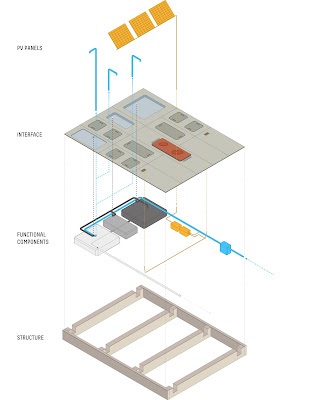In the field of prefabrication or offsite construction, one concept above all others, has been discussed, tried, and tested, from both architectural and industrial perspectives: the service core. Rationalized as the dwelling’s technical heart, the central appliance, engine, or hub projected all wet and technical spaces within an integrated factory-produced unit. Other conventional systems for structure, skin and circulation would surround these cores in an on and off-site hybridization. Visions of the core proposed plug-in pods containing baths, kitchens, and other mechanical spaces to service flexible arrangements radiating from a productive nucleus. Sometimes compared to subassembly components in vehicle manufacturing, the core implies the same harmonized supply chains for its commercialization.
The idea has not evolved much since the beginning of the twentieth century’s first experiments. A non-exhaustive list of cores https://www.arcc-journal.org/index.php/arccjournal/article/view/426 outlines suggested theories and practical applications. While mostly imagined as vertical elements, Italian architect Carlo Ratti known for his ideas and projects uniting design with open-source methodologies has developed a unique take on the core.
Working with not-for-profit Indian firm Werise, the team created a prototype horizontal core inspired by a computer motherboard analogy where the utilitarian plane constitutes the platform of a user-centric housing configuration. The mother board is part of a core-house strategy providing an integrated service space approximately 12 square meters (3m x 4m) encompassing the dwelling’s technical elements from batteries for electricity to water filtration, storage, and distribution. From this generative cartridge, the house can evolve in any direction while being hooked-up to the power panel.
Proposed as a flatpacked easy to deliver subassembly, the thick floorplate also elevates interior spaces from the surrounding landscape, providing services, protection and a place marker. The LivingBoard transposes ideas used within the maker movement to empower users to foster tools and devices from simple to use components; Arduino boards are probably the closest analogy to Ratti's living board as they can be tuned to accomplish a variety of programmable tasks. Ratti estimates that his version of a horizontal service core can simplify the house design, procurement and building process.

No comments:
Post a Comment